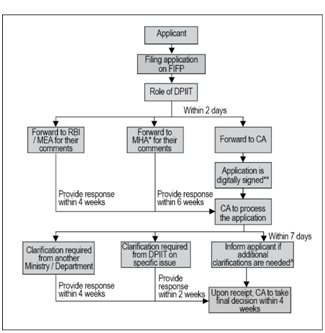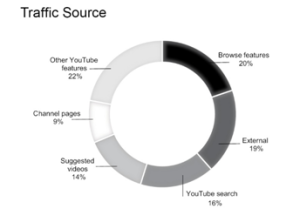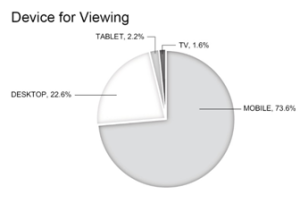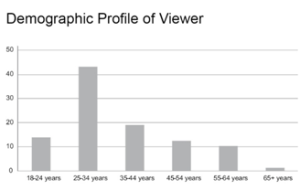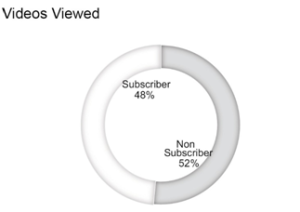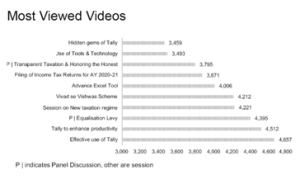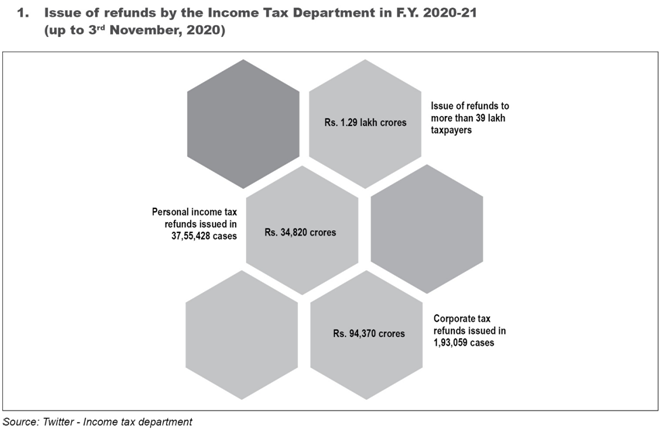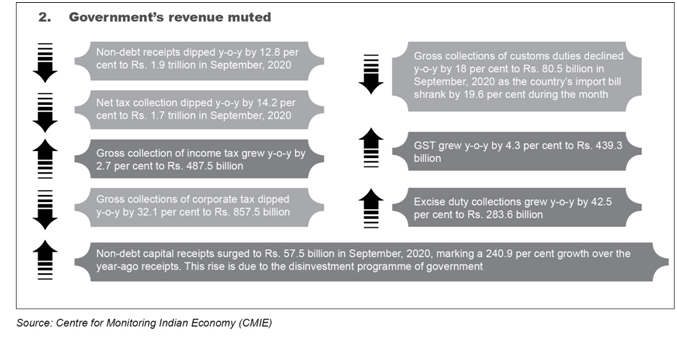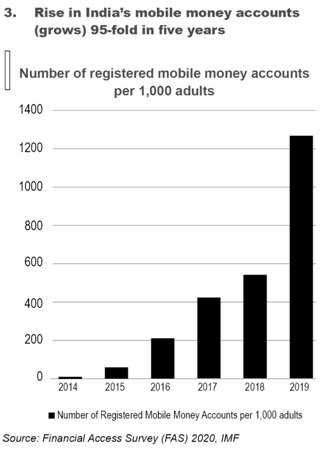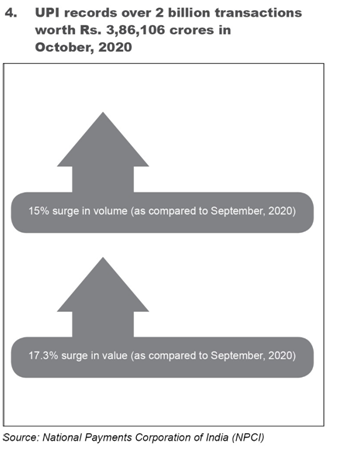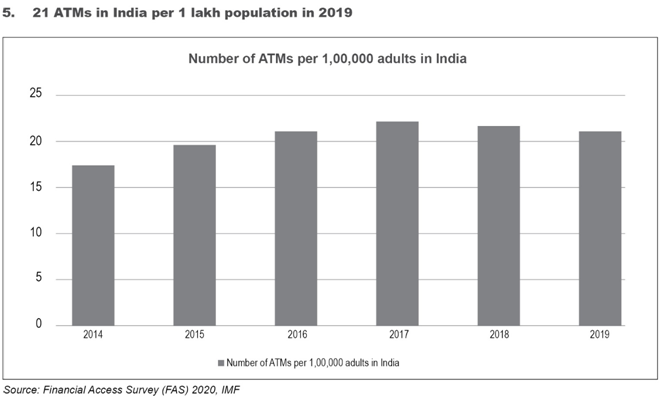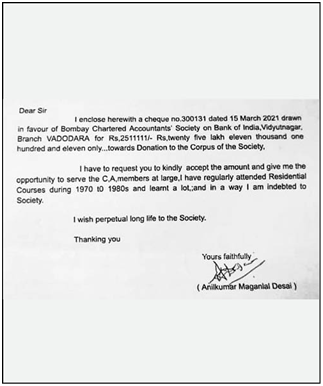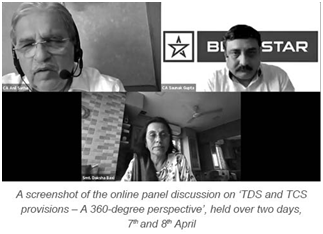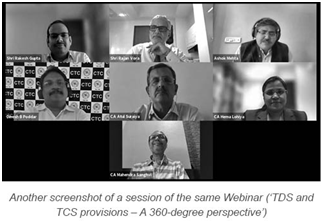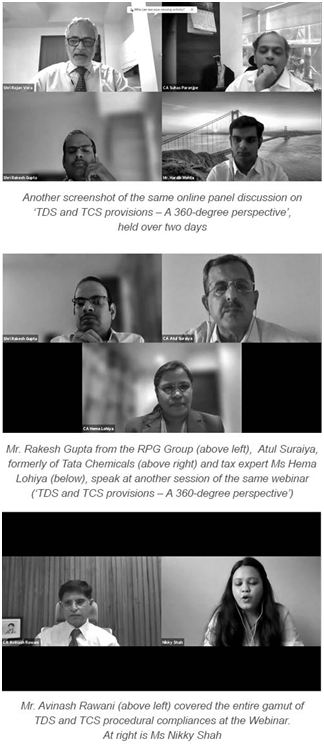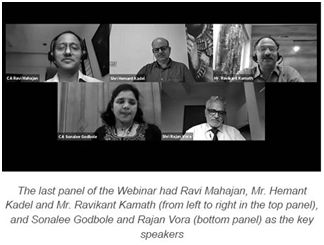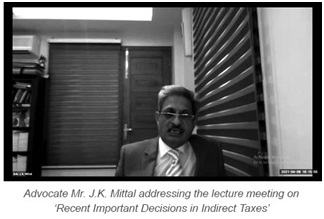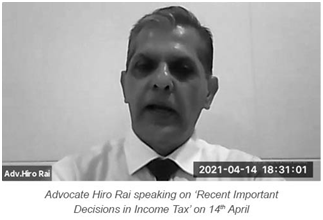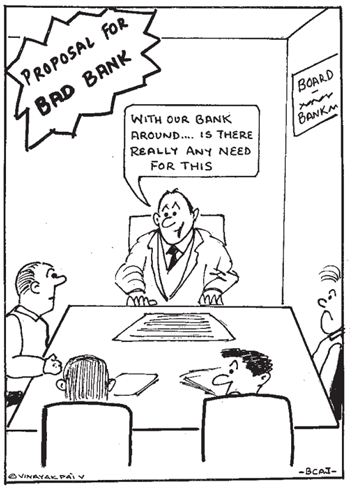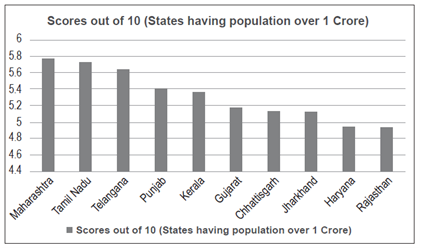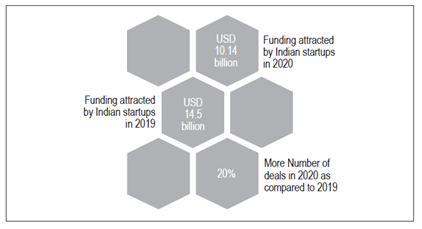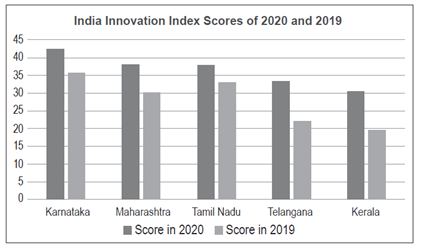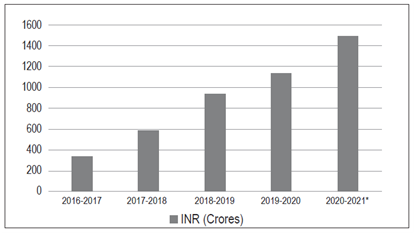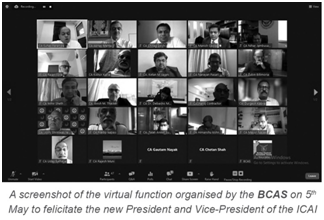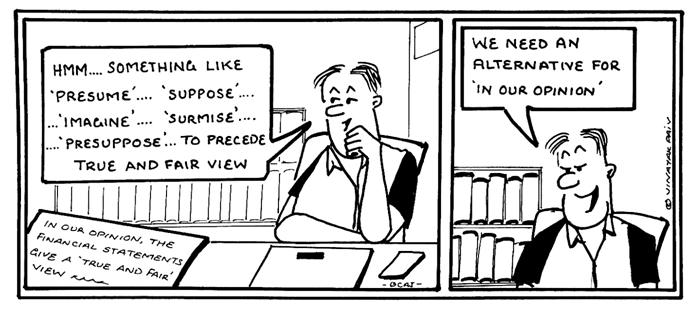7.
National Co-operative Development Corporation vs. Commissioner of Income
Tax, Delhi (2020) 427 ITR 288 (SC)
Business Income – To decide the question as to whether a particular
source of income is business income one would have to look to the notions of
what is business activity
Business Expenditure – There can be an amount treated as a capital
receipt while the same amount expended may be a revenue
expenditure
Income – Diversion by overriding title – If a portion of income
arising out of a corpus held by the assessee consumed for the purposes of
meeting some recurring expenditure arising out of an obligation imposed on the
assessee by a contract or by statute or by own volition or by the law of the
land, and if the income before it reaches the hands of the assessee is already
diverted away by a superior title, the portion passed or liable to be passed on
is not the income of the assessee
The function of the appellant corporation, the National Co-operative
Development Corporation, inter alia was to advance loans or grant subsidies to State Governments for
financing co-operative societies, provide loans and grants directly to the
national level co-operative societies, as also to the State level co-operative
societies, the latter on the guarantee of State Governments. The funding process
for the appellant corporation was by way of grants and loans received from the
Central Government.
The appellant was required to maintain a fund called the National
Co-operative Development Fund (‘the Fund’) which is, inter alia, credited with all monies received by it by way of grants and loans
from the Central Government, as well as sums of money as may from time to time
be realised out of repayment of loans made from the Fund or from interest on
loans or dividends or other realisations on investments made from the
Fund.
In furtherance of this, as and when surplus funds accumulated, the
appellant invested the idle funds in fixed deposits which generated income. The
income by way of interest on debentures and loans advanced to the State
Governments / Apex Co-operative Institutions were credited to this
account.
The appellant being an intermediary or ‘pass through’ entity, treated
the funds received from the Central Government as capital receipts and the
interest component as income; however, it claimed the component of interest
income earned on the funds received u/s 13(1) of the NCDC Act and sums disbursed
by way of ‘grants’ to national or state level co-operative societies, as
eligible for deduction for determining its ‘taxable income’.
The A.O. in his assessment order for A.Y. 1976-77 opined that the
non-refundable grants were in the nature of capital expense and not a revenue
expense and, thus, disallowed the same as a deduction. What weighed with the
A.O. was also the fact that the grants received from the Central Government were
in the nature of a capital receipt exempt from tax. The A.O. noted that no
deduction as sought for had been claimed in the previous assessment
years.
An appeal was preferred before the Commissioner of Income-tax
(Appeals), New Delhi [‘CIT(A)’], which in terms of an order dated
22nd August, 1980 opined that the grants made by the appellant
without doubt fell within its authorised activities which were interlinked and
interconnected with its main business of advancing loans on interest to State
Governments and co-operative societies. These grants were intended to be
utilised for various projects which were admittedly of capital nature and
resulted in the acquisition of capital assets, but not by the appellant itself.
In terms of section 37 of the IT Act as it stood for the relevant assessment
year, any expenditure (except of the prohibited type) laid out or expended
wholly and exclusively for the purpose of the business was allowable as a
deduction while computing business income. The functions and activities of the
appellant included giving loans and grants which, in fact, was the very purpose
for which it had been set up.
The Income-tax Appellate Tribunal (‘ITAT’), Delhi bench, however,
accepted the view taken by the A.O. and did not agree with the approach of the
CIT(A), setting aside the order of the CIT(A). The rationale for doing so was
slightly different. It held that the grants, additional grants and other sums
received by the appellant from the Central Government went to a single fund and
were not treated as its income and, thus, the disbursements made from the same
could not be treated as revenue expenses. The disbursement of monies to State
Governments and co-operative societies was held to be a pure and simple
application of the fund u/s 13(2) of the NCDC Act and could not be expenditure
in the nature of revenue.
On a reference made u/s 256(1), the High Court opined that since the
business of the appellant was to receive funds and to then advance them as loans
or grants, the interest income earned which was so applied would also fall under
the head ‘D’ of section 14 of Chapter IV of the IT Act under the head of
‘Profits and gains of business or profession’ being a part of its normal
business activity. The High Court delved into the scheme of the NCDC Act and in
view of section 13, which provided for the creation of a fund being the common
pool where all accretions get amalgamated, including from interest on loans and
dividends and interest earned on FDRs, it was held that the monies which were
advanced from the fund cannot be distinctly identified as forming part of the
interest income. The other aspect the High Court opined on was that in order to
claim deduction as revenue expenditure, the appellant has to first establish
that it incurred expenditure. The advancement of loans to the State Governments
and co-operative societies could not be claimed as expenditure as the same does
not leave the hands of the appellant irretrievably. It is not necessary for us
to delve further into this issue as that was not the question framed to be
answered.
According to the Supreme Court, the first aspect which required
consideration was whether interest on loans or dividends would fall under the
head of ‘Income from other sources’ u/s 56 or would it amount to income from
‘Profits and gains of business or profession’ under head ‘D’ of section
14.
The Supreme Court was of the view that the only business of the
appellant was to receive funds and then to advance these as loans or grants. The
interest income arose on account of the funds so received and it may not have
been utilised for a certain period of time, being put in fixed deposits so that
the amount did not lie idle. The income generated was again applied to the
disbursement of grants and loans. The income generated from interest was
necessarily interlinked to the business of the appellant and would, thus, fall
under the head of ‘Profits and gains of business or profession’. There would,
therefore, be no requirement of taking recourse to section 56 for taxing the
interest income under this residuary clause as ‘Income from other sources’.
According to the Supreme Court, to decide the question as to whether a
particular source of income is business income, one would have to look to the
notions of what is the business activity. The activity from which the income is
derived must have a set purpose. The business activity of the appellant was
really that of an intermediary to lend money or to give grants.
Thus, the generation of interest income in support of only this
business (not even primary) for a period of time when the funds are lying idle
and utilised for the same purpose would ultimately be taxable as business
income. The fact that the appellant did not carry on business activity for
profit motive is not material as profit-making is not an essential ingredient on
account of self-imposed and innate restrictions arising from the very statute
which creates the appellant corporation and the very purpose for which it has
been set up. The Supreme Court drew support from its judgment in
The Sole Trustee, Lok Shikshana Trust vs. The Commissioner of Income
Tax, Mysore, (1976) 1 SCC 254.
In view of the aforesaid finding, the crucial issue, according to the
Supreme Court,would be whether the amounts advanced as grants from this income
generated could be adjusted against the income to reduce the impact of taxation
as a revenue expense.
The Supreme Court noted that undoubtedly the amount received to be
advanced as loans and grants by the appellant from the Central Government were
treated as capital receipts. The line of argument on behalf of the appellant
was, however, predicated on a plea that assuming it to be so, the grants (and
not loans) could not be treated as capital expenditure as neither any enduring
advantage nor benefit had accrued to the appellant, nor had any asset come into
existence which belonged to or was owned by the latter. Thus, what may be a
capital receipt in the hands of the appellant may still be revenue
expenditure.
The Court was not in disagreement with the aforesaid proposition to
the extent that there could be an amount treated as a capital receipt while the
same amount expended may be a revenue expenditure. But the question was whether
this was so in the present case.
The Supreme Court noted that undoubtedly the interest income was not
directly received as a capital amount. It was actually generated by utilising
the capital receipts when the funds were lying idle though the income so
generated was then applied for the very objective for which the appellant
corporation was set up, i.e., disbursement of grants and advancement of
loans.
The Supreme Court observed that the impugned judgment of the High
Court dealt with both loans and grants but on the question of references framed
before it the dispute related to only grants. The Court noted that it was not
the appellant’s case that the amounts advanced as loans, the same being payable
with interest, could be adjusted as expenses against the business income
generated by investing the amounts and consequently earning interest on the
same. The argument was predicated on the reasoning that since the interest
generated is treated as a business income, the grants made, which would never
come back, should be adjustable as expenses against the same. The Supreme Court
noted that to the extent the grants were returned, the CIT(A) did not allow the
entire deduction as claimed for but only did so qua the amount which was disbursed as grant and never received
back.
The Court noted that the very purpose for which the statutory
appellant corporation had been set up was to advance loans or grant subsidies to
State Governments for financing co-operative societies, etc. There was no other
function which the appellant carried out, nor did it generate any funds of its
own from any other business. In a sense the role was confined to receiving funds
from the Central Government and appropriately advancing the same as loans,
grants or subsidies. The objectives were wholly socio-economic and the amounts
received including grants came with a prior stipulation for them to be passed on
to the downstream entities. This was the reason they have been treated as
capital receipts. However, the Supreme Court was unable to opine that since this
was a pass-through entity on the basis of a statutory obligation, the
advancement of loans and grants was not a business activity when really it was
the only business activity. Once it was business activity, the interest
generated on the unutilised capital had to be held to be business
income.
The disbursement of non-refundable grants was an integral part of the
business of the appellant corporation as contemplated u/s 13(1) of the NCDC Act
and, thus, was for the purpose of its business. The purpose was direct; merely
because the grants benefited a third party it would not render the disbursement
as ‘application of income’ and not expenditure.
The Supreme Court did not find force in the submission of the Revenue
that the direct nexus of monies given as outright grants from the taxable
interest income could not be distinctly identified. It noted that the CIT(A) had
allowed the business expenditure only to a certain amount on the basis of the
facts and figures as they emerged from the balance sheet. This was a burden
which was to be discharged by the appellant and the CIT(A) had been satisfied
with the nexus of interest income with the disbursement of grants made, as
having been established.
The Court also noted another principle to test the proposition, i.e.,
of diversion by overriding title and that this principle was originally set out
in the case of Sitaldas Tirathdas (1961) 2 SCR 634 and the principle has been followed since then. If a portion of
income arising out of a corpus held by the assessee consumed for the purposes of
meeting some recurring expenditure arising out of an obligation imposed on the
assessee by a contract or by statute or by own volition or by the law of the
land and if the income before it reaches the hands of the assessee is already
diverted by a superior title, the portion passed or liable to be passed on is
not the income of the assessee. The test, thus, is what amounts to application
of income and what is the diversion by overriding title. The principle, in a
sense, would apply if the Act or the Rules framed thereunder or other binding
directions bind the institution to spend the interest income on disbursal of
grants.
However, the Supreme Court noted that the NCDC Act did not specify as
to who should be the grantee and what should be amount to be granted. All that
was prescribed was that the business of the appellant corporation was to provide
loans or grants for the avowed object for which it has been set up. The decision
with regard to who should get the grant was taken by the appellant directly in
the course of, and for the purpose of, its business. Thus, whether the amount
agreed to be given should be given as a loan or a grant, or both, was entirely
at the business discretion of the appellant. No grantee had a superior title to
the funds. Hence, this was not a case of diversion of income by overriding
title.
The Supreme Court also noted that even though in the view of the
appellant itself for the preceding years in question it never claimed any such
adjustments, but that, according to the Court, did not preclude the right of the
appellant as they sought to make out a case of a mistake at a subsequent
date.
Besides, the Supreme Court stated that by the Finance Act of 2003 a
provision in section 36 was added as sub-clause (1)(xii) so as to provide that
an expenditure not being capital expenditure incurred by a corporation or body
corporate, by whatever name called, constituted or established by a Central,
State or Provincial Act for the objects and purposes authorised by such Act
under which such corporation or body corporate was constituted or established,
shall be allowed as a deduction in computing the income under the head ‘profits
and gains of business or profession’.
According to the Supreme Court, prior to the insertion of this
sub-clause such expenses would be permissible under the general section 37(1)
which provides for deduction of permissible expenses on principles of commercial
accountancy. After the amendment, such expenses get allowed under the specific
section, viz., section 36(1)(xii) after the amendment by the Finance Act,
2003.
In conclusion, the Supreme Court stated that it was unable to agree
with the findings arrived at by the A.O., the ITAT and the High Court
albeit for different reasons and it concurred with the view taken by the
CIT(A) for the reasons set out hereinabove.
8. Raj Pal Singh
vs. Commissioner of Income Tax, Rohtak, Haryana (2020) 427 ITR 1 (SC)
Capital Gains – Compulsory acquisition – Date of accrual – In matters
relating to compulsory acquisition of land under the Land Acquisition Act of
1894, completion of transfer with vesting of land in the Government essentially
correlates with taking over of possession by the Government – However, where
possession is taken before the relevant stage for such taking over, capital
gains shall be deemed to have accrued upon arrival of the relevant stage and not
before – To be more specific, in such cases capital gains shall be deemed to
have accrued (a) upon making of the award, in the case of ordinary acquisition
referable to section 16, and (b) after expiration of 15 days from the
publication of the notice mentioned in section 9(1) in the case of urgency
acquisition u/s 17
Effect of continuing in possession of property after expiry of lease
– Where the time period of any lease of immovable property is limited, it
determines by efflux of such time, as per section 111(a) of the Act of 1882 – In
terms of section 108(q) of the Transfer of Property Act of 1882, on
determination of lease the lessee is bound to put the lessor into possession of
the leased property – In a case where lessee does not deliver possession to the
lessor after determination of the lease but the lessor accepts rent or otherwise
assents to his continuing in possession, in the absence of an agreement to the
contrary, the status of such lessee is that of tenant holding over, in terms of
section 116 of the Act of 1882 – But in the absence of acceptance of rent or
otherwise assent by the lessor, the status of lessee is that of tenant at
sufferance
The land, admeasuring 41 kanals and 14 marlas and comprising Khasra Nos. 361 to 369 and 372 to 375 at village
Patti Jattan, Tehsil and District Ambala, became an evacuee property after its
original owner migrated to Pakistan; the same was allotted to the said Mr. Amrik
Singh, who had migrated to India, in lieu of his property left behind in Pakistan. However, a substantial part
of the subject land, except that comprising Khasra Nos. 361 and 364 admeasuring
5 kanals and 7 marlas, had been given by the original owner on a lease for 20 years to a
Government College, the S.A. Jain College, Ambala City, and the lease was to
expire on 31st August, 1967. Later, the said College moved the
Government of Haryana for compulsory acquisition of the subject land. While
acting on this proposition, a Notification u/s 4 of the Land Acquisition Act,
1894 was issued by the Government of Haryana on 15th May, 1968
seeking to acquire the land for public purpose, namely, a playground for the
College. This was followed by the declaration dated 13th August, 1969
u/s 6 of the Act of 1894. Ultimately, after submission of the claim for
compensation, the Land Acquisition Collector, Ambala, proceeded to make the
award on 29th September, 1970.
The award provided that the land owners were entitled to interest
from the date of the Notification u/s 4 which was issued on 15th May,
1968. Interest at the rate of 6% per annum would be paid to the land owners in
addition to the compensation and solatium from 15th May, 1968 to
date.
For the assessment year 1971-1972 the assessee declared its income at
Rs. 1,408, inclusive of Rs. 408 from the house property and Rs. 1,000 being the
amount of interest earned. While not accepting the income so declared, the A.O.
in his assessment order enhanced the income from house property to Rs. 1,200 and
also enhanced the interest income to Rs. 11,596 with reference to the interest
of Rs. 10,596 received under the award in question. However, the A.O. observed
that capital gains were not relevant for the year under consideration because
the land in question had been acquired in the earlier years.
Being aggrieved by the order, the assessee preferred an appeal before
the Appellate Assistant Commissioner of Income-tax.
Though the ground of appeal concerning house property was accepted
and the addition made by the A.O. in that regard was deleted, but on examination
of the award dated 29th September, 1970 the CIT(A) found that the
assessee was paid Rs. 62,550 as compensation and Rs. 9,532 as solatium, yet,
capital gains on this account were not taxed by the A.O. Accordingly, a show
cause notice dated 18th November, 1983 was issued to the assessee as
to why capital gains relating to the acquisition of this land be not charged to
tax in the assessment year under consideration. The assessee in its reply dated
26th December, 1983 stated, inter alia, that in the urgency acquisition u/s 17 of the Act the transfer
takes place immediately after the Notification and the owner ceases to be in
possession of the land in question. The CIT(A), in his order dated
17th May, 1984, rejected the submissions made on behalf of the
assessee and held that the capital gains on the acquisition of the land
amounting to Rs. 23,146 were required to be added to the income of the previous
year relevant to the assessment year under consideration.
Against the order so passed by the CIT(A), the assessee preferred an
appeal before the Income-tax Appellate Tribunal, Chandigarh Bench.
The ITAT referred to its order pertaining to the assessment year
1975-1976 in which a similar question of capital gains arising out of another
award of compensation for acquisition of another parcel of land was involved.
The ITAT in that case held that capital gains arising from the acquisition of
the lands in question were assessable for the accounting period in which the
assessee was divested of the title to the property that vested in the
Government, that is, the date of taking possession. The ITAT in its order dated
19th December, 1985 for A.Y. 1971-1972, however, found that the
actual date of taking possession by the Government was not known and hence
proceeded to restore the matter to the file of the A.O. to find out the date
when the Government took possession while observing that if possession was taken
before the award and before 1st April, 1970, capital gains were not
to be included in the income for the A.Y. 1971-1972, but if possession was taken
during the period 1st April, 1970 to 31st March, 1971,
capital gains would be assessable for this A.Y.,1971-1972.
In the meantime, against the aforesaid award dated 29th
September, 1970, the appellant took up the proceedings in LA Case Nos. 37
and 38 of 1971 before the Additional District Judge, Ambala who, by the order
dated 30th December, 1984, allowed a marginal enhancement of the
amount of compensation and corresponding solatium and interest. Still not
satisfied, the appellant preferred an appeal, being Regular First Appeal No. 390
of 1975, before the Punjab and Haryana High Court seeking further enhancement.
The High Court allowed this appeal by its judgment dated 25th
October, 1985 and awarded compensation by applying the rate of Rs. 8 per sq. yd.
against Rs. 3.50 and Rs. 2.50 per sq. yd., as allowed by the Additional District
Judge and the Land Acquisition Collector, respectively. The High Court also
allowed 30% solatium and corresponding interest.
In compliance with the directions of the ITAT in the aforesaid order
dated 19th December, 1985, the A.O. served a specific question to the
assessee about the date on which possession of the acquired land was taken by
the Government of Haryana. In his reply, the appellant stated the date of
possession was 15th May, 1968, being the date of Notification u/s 4
of the Act of 1894. Though no evidence in this regard was adduced but the
appellant relied upon the decision of the Kerala High Court in the case of
Peter John vs. Commissioner of Income-tax (1986) 157 ITR 711
to submit that capital gains, if any, arise at the point of time when
the land vests in the Government and such date in the present case was 15th May,
1968.
The A.O. took note of all the facts of this case in his reassessment
order dated 25th January, 1988 and observed that ‘since in the
instant case, the award was announced on 29th September, 1970, the
said date, 29th September, 1970, is deemed to be the date of taking
possession by the Government’. In this view of the matter, the A.O. held that
‘taxability of capital gains arose in the previous year relevant to the
assessment year under consideration’.
The A.O. also noticed that the appellant failed to place on record
the date of publication of the notice u/s 9 of the Act of 1894 and observed that
there was no reference to urgency acquisition in the present case nor any such
mention was found in the award dated 29th September, 1970. In the
given circumstances, the A.O. held that the acquisition in question was not a
matter of urgency u/s 17 of the Act of 1894 and that the acquisition had only
been under the ‘normal powers’.
With the aforesaid findings, the A.O. proceeded to assess the tax
liability of the appellant on long-term capital gains arising on account of
acquisition on the basis of the amount of compensation allowed in the award
dated 29th September, 1970 as also the enhanced amount of
compensation accruing finally as a result of the aforesaid order dated
30th December, 1984 passed by the Additional District Judge and the
judgment dated 25th October, 1985 passed by the High Court. As
regards interest income, the A.O. carried out protective assessment on accrual
basis @ 12% per annum for the previous year relevant to the assessment year in
question, i.e., for the period 1st April, 1970 to 31st
March, 1971 while providing that such calculation would be subject to amendment,
if necessary.
The aforesaid order of re-assessment dated 25th January,
1988 was challenged by the appellant before the CIT(A). This appeal was
considered and dismissed by the CIT(A) through an elaborate order dated
31st March, 1989.
Being aggrieved by the order so passed by the CIT(A), the appellant
preferred an appeal before the ITAT.
The ITAT referred to the observations regarding ‘possession of land’
as occurring in the award dated 29th September, 1970 and observed
that as per those observations possession of the land in question was supposed
to have been taken on 15th May, 1968, as from that date the assessee
was entitled to interest at 6% per annum on the amount of compensation. The ITAT
further observed that to sort out the controversy, such stipulation in the award
was required to be depended upon and the date of actual physical possession was
inferable from the intention of the parties and the language of such stipulation
in the award. On this reasoning, the ITAT held that since the actual physical
possession changed hands on 15th May, 1968, the transaction should be
considered as having taken place on that date and not on the date of award,
i.e., 29th September, 1970; and hence, capital gains were not to be
taxed for the year under consideration. Having reached this conclusion, the ITAT
held that the very basis of assessing capital gains having been knocked out, the
other issues were rendered redundant.
On a reference to the High Court u/s 256(1), the High Court answered
the reference in favour of the Revenue while holding that the Collector had not
taken possession of the land u/s 17 of the Act of 1894 and that the said
provision was not invoked by the State Government. The High Court further held
that for the purpose of assessment of capital gains, the date of award (i.e.,
29th September, 1970) was required to be taken as the date of taking
over possession because, on that date, the land in question vested in the
Government u/s 16 of the Act of 1894.
Being aggrieved by the judgment and order dated 23rd
April, 2008 so passed by the High Court, holding that the capital gains arising
out of the acquisition in question were chargeable to tax in the A.Y. 1971-1972,
the assessee preferred an appeal by special leave before the Supreme
Court.
The Supreme Court noted that the assessment in question is for the
assessment year 1971-1972 in relation to the assessee Amrik Singh HUF. The
appellant Raj Pal Singh is the son of the late Amrik Singh and is the
Karta of the assessee HUF.
According to the Supreme Court, the principal points that arose for
its determination in this appeal were:
1. As to whether, on
the facts and in the circumstances of the present case, transfer of the capital
asset (land in question), resulting in capital gains for the purposes of section
45 of the Act of 1961 was complete on 15th May, 1968, the date of
Notification for acquisition u/s 4 of the Act of 1894; and hence, capital gains
arising out of such acquisition and interest accrued could not have been charged
to tax with reference to the date of award, i.e., 29th September,
1970?
2. As to whether the
fact situation of the present case was similar to that of the other case of the
appellant in relation to A.Y. 1975-1976 where the same issue relating to the
date of accrual of capital gains was decided by the ITAT in favour of the
appellant with reference to the date of taking possession by the Government, and
having not challenged the same, it was not open for the Revenue to question the
similar decision of the ITAT in the present case pertaining to the A.Y.
1971-1972?
The Supreme Court in a brief overview of the scheme of the Act of
1894, as existing at the relevant point of time, observed that publication of
preliminary Notification u/s 4 by itself did not vest the property in the
Government; it only informed about the intention of the Government to acquire
the land for a public purpose. After this Notification, in the ordinary course,
u/s 5A the Land Acquisition Collector was required to examine the objection, if
any, to the proposed acquisition, and after examining his report, if so made,
the Government was to issue declaration u/s 6 signifying its satisfaction that
the land was indeed required for public purpose. These steps were to be followed
by notice u/s 9 stating that the Government intended to take possession of the
land and inviting claims for compensation. Thereafter, the Collector was to make
his award u/s 11. As noticed hereinbefore, as per section 16 of the Act of 1894
the Land Acquisition Collector, after making the award, could have taken
possession of the land under acquisition and thereupon the land vested in the
Government free from all encumbrances.
A deviation from the process above-noted and a somewhat different
process was permissible in section 17 of the Act of 1894 whereunder, in cases of
urgency and if the Government had so directed, the Collector could have taken
possession of any waste or arable land after fifteen days from the publication
of the notice mentioned in section 9(1), even though the award had not been
made, and thereupon the land was to vest in the Government free from all
encumbrances.
The Supreme Court, after noting various authorities on the subject,
opined that in matters relating to compulsory acquisition of land under the Act
of 1894, completion of transfer with vesting of land in the Government
essentially correlates with taking over of possession of the said land. However,
where possession is taken before arriving of the relevant stage for such taking
over, capital gains shall be deemed to have accrued upon arrival of the relevant
stage and not before that. To be more specific, in such cases capital gains
shall be deemed to have accrued (a) upon making of the award, in the case of
ordinary acquisition referable to section 16; and (b) after the expiry of
fifteen days from the publication of the notice mentioned in section 9(1) in the
case of urgency acquisition u/s 17.
According to the Supreme Court the land in question was subjected to
acquisition under the Act of 1894 by adopting the ordinary process leading to
award u/s 11. Therefore, ordinarily, capital gains would have accrued upon
taking over of possession after making of the award. Consequently, capital gains
to the assessee for the acquisition in question could not have accrued before
the date of award, i.e., 29th September, 1970.
The Court noted that on the strength of the submission that the land
in question had already been in possession of the beneficiary of acquisition, it
had been suggested on behalf of the assessee that the land vested in the
Government immediately upon issuance of the Notification u/s 4 of the Act of
1894, i.e., 15th May, 1968, and the capital gains accrued on that
date. This suggestion and the contentions founded thereupon, in the opinion of
the Supreme Court, were totally meritless.
In order to wriggle out of the above-mentioned plain operation of
law, it had been desperately suggested on behalf of the appellant before the
Supreme Court that it had been a case of urgency acquisition and, hence, the
process contemplated by section 17 of the Act of 1894 would apply. This
suggestion, according to the Supreme Court, was also baseless and suffered from
several infirmities.
In the first place, it was evident on the face of the record that it
had not been a matter of urgency acquisition and nowhere had it appeared that
the process contemplated by section 17 of the Act of 1894 was resorted to. Even
the contents of the award dated 29th September, 1970 made it clear
that the learned Land Acquisition Collector only awarded interest from the date
of initial Notification for the reason that the land was in possession of the
College; it was nowhere stated that he had received any directions from the
Government to take possession of the land before making of the award while
acting u/s 17.
Secondly, if at all the proceedings were undertaken u/s 17 of the Act
of 1894, the land could have vested in the Government only after expiration of
fifteen days from the date of publication of the notice u/s 9(1); and, in any
case, could not have vested in the Government on the date of publication of the
initial Notification u/s 4 of the Act of 1894. Significantly, the assessee did
not divulge the date of publication of the notice u/s 9(1) despite the queries
of the A.O. The suggestion about application of the process contemplated by
section 17 of the Act of 1894 remained totally unfounded.
In view of the above, according to the Supreme Court, the only
question that remained was as to what is the effect of the possession of the
College over a part of the subject land at the time of issuance of the initial
Notification for acquisition.
The Supreme Court noted that it was not in dispute that a large part
of the subject land was given on lease to the College and the said lease expired
on 31st August, 1967 but the land continued in possession of the
College.
Where the time period of any lease of immovable property is limited,
it determines by efflux of such time, as per section 111(a) of the Act of 1882.
Further, in terms of section 108(q) of the Act of 1882, on determination of
lease, the lessee is bound to put the lessor into possession of the leased
property. In a case where the lessee does not deliver possession to the lessor
after determination of the lease but the lessor accepts rent or otherwise
assents to his continuing in possession, in the absence of an agreement to the
contrary, the status of such lessee is that of tenant holding over, in terms of
section 116 of the Act of 1882. But in the absence of acceptance of rent or
otherwise assent by the lessor, the status of lessee is that of tenant at
sufferance.
According to the Supreme Court, the part of the land in question
which was given on lease, the possession of the College after determination of
the lease on 31st August, 1967 was only that of a tenant at
sufferance because it has not been shown whether the lessor, i.e., the
appellant, accepted rent or otherwise assented to the continuation of the lease.
The possession of the College over the part of land in question being only that
of tenant at sufferance, had the corresponding acknowledgment of the title of
the appellant and of the liability of the College to pay mesne profits for use and occupation. The same status of the parties
qua the land under lease existed on the date of Notification for
acquisition, i.e., 15th May, 1968 and continued even until the date
of award, i.e., 29th September, 1970. In other words, even until the
date of award the appellant continued to carry its status as owner of the land
in question and that status was not lost only because a part of the land
remained in possession of the College. In this view of the matter, the
suggestion that the land vested in the Government on the date of initial
Notification remains totally baseless and could only be rejected.
Apart from the above, the significant factor for which the entire
case of the assessee was knocked to the ground was that neither on the date of
Notification, i.e., 15th May, 1968, nor until the date of award the
Government took over possession of the land in question. The possession had been
of the erstwhile lessee, the College. Even if the said College was going to be
the ultimate beneficiary of the acquisition, it could not be said that
immediately upon issuance of the Notification u/s 4 of the Act of 1894 its
possession became the possession of the Government. Its possession, according to
the Supreme Court, remained that of tenant at sufferance and not
beyond.
The Supreme Court held that viewed from any angle, it was clear that
accrual of capital gains in the present case had not taken place on
15th May, 1968. If at all possession of the College was to result in
vesting of the land in the Government, such vesting happened only on the date of
award, i.e., 29th September, 1970, and not before. In other words,
the transfer of land from the assessee to the Government reached its completion
not before 29th September, 1970, and hence, the earliest date for
accrual of capital gains because of this acquisition was the date of award,
i.e., 29th September, 1970. Therefore, the assessment of capital
gains as income of the appellant for the previous year relevant to A.Y.
1971-1972 does not suffer from any infirmity or error.
Coming to the second question about the effect of the decision of the
ITAT in relation to the other case of the assessee for the A.Y. 1975-1976 where
the issue concerning date of accrual of capital gains was decided against the
Revenue with reference to the date of taking possession, the Supreme Court noted
that the said decision for the A.Y. 1975-1976 was not appealed against and had
attained finality. It had been argued on behalf of the appellant before the
Supreme Court that it was therefore not open for the Revenue to question the
similar decision of the ITAT in the present case pertaining to the A.Y.
1971-1972.
The Supreme Court noted that in the case pertaining to the A.Y.
1975-1976, the question of capital gains arose in the backdrop of the fact that
another parcel of land of the appellant was acquired for the purpose of
construction of a warehouse in Ambala City. The Notification u/s 4 of the Act of
1894 was issued on 26th June, 1971 and the award of compensation was
made on 27th June, 1974 but possession of the said land was taken by
the Government on 4th September, 1972, i.e., before making of the
award. In the given set of facts and circumstances, the ITAT accepted the
contention that the case fell under the urgency provision contained in section
17 of the Act of 1894 where the assessee was divested of the title to the
property that vested in the Government with effect from 4th
September, 1972, the date of taking over possession. Hence, the ITAT held that
the capital gains arising from the said acquisition were not assessable for the
accounting period relevant for the A.Y. 1975-1976.
According to the Supreme Court,the principle that if the Revenue has
not challenged the correctness of the law laid down by the High Court and has
accepted it in the case of one assessee, then it is not open to the Revenue to
challenge its correctness in the case of other assessees without just cause,
would not apply in the present case for more than one reason.
In the first place, it was ex facie evident that the matter involved in the said case pertaining to the
A.Y. 1975-1976 was taken to be an acquisition under the urgency provision
contained in section 17 of the Act of 1894, whereas the acquisition proceedings
in the present case had not been of urgency acquisition but had been of ordinary
process where possession could have been taken only u/s 16 after making of the
award.
Secondly, the fact that the said case relating to the A.Y. 1975-1976
was not akin to the present case was indicated by the ITAT itself. While the
answer in relation to the A.Y. 1975-1976 was given by the ITAT in favour of the
assessee to the effect that possession having been taken on the specified date,
i.e., 4th September, 1972, capital gains were not assessable for the
A.Y. 1975-1976, but while deciding the appeal relating to the present case for
the A.Y. 1971-1972, the ITAT found that the date of taking over possession was
not available and hence the matter was restored to the file of the ITO to find
out the actual date of possession.
Thirdly, even if it was assumed that the stand of Revenue in the
present case was not in conformity with the decision of the ITAT in relation to
the A.Y. 1975-1976, it could not be said that Revenue had no just cause to take
such a stand. As noticed, while rendering the decision in relation to the A.Y.
1975-1976, the ITAT did not notice the principles available in various decisions
including that of the Supreme Court in Governor of Himachal Pradesh and Ors. vs. Avinash Sharma 1970 SC AIR
1576 that even in the case of urgency acquisition u/s 17 of the Act of
1894, land was to vest in Government not on the date of taking over possession
but only on the expiration of fifteen days from the publication of the notice
mentioned in section 9(1). Looking to the facts of the present case and the law
applicable, the Revenue had every reason to question the correctness of the
later decision of the ITAT dated 29th June, 1990 in the second round
of proceedings pertaining to the A.Y. 1971-1972.
Fourthly, the ITAT itself on being satisfied about the question of
law involved in this case, made a reference by its order dated 15th
July, 1991 to the High Court. The High Court having dealt with the matter in the
reference proceedings and having answered the reference in conformity with the
applicable principles, the assessee could not be heard to question the stand of
the Revenue with reference to the other order for the A.Y. 1975-1976. In any
case, according to the Supreme Court, it could not be said that the decision in
relation to the A.Y. 1975-1976 had been of any such nature which would preclude
the Revenue from raising the issues which are germane to the present
case.
